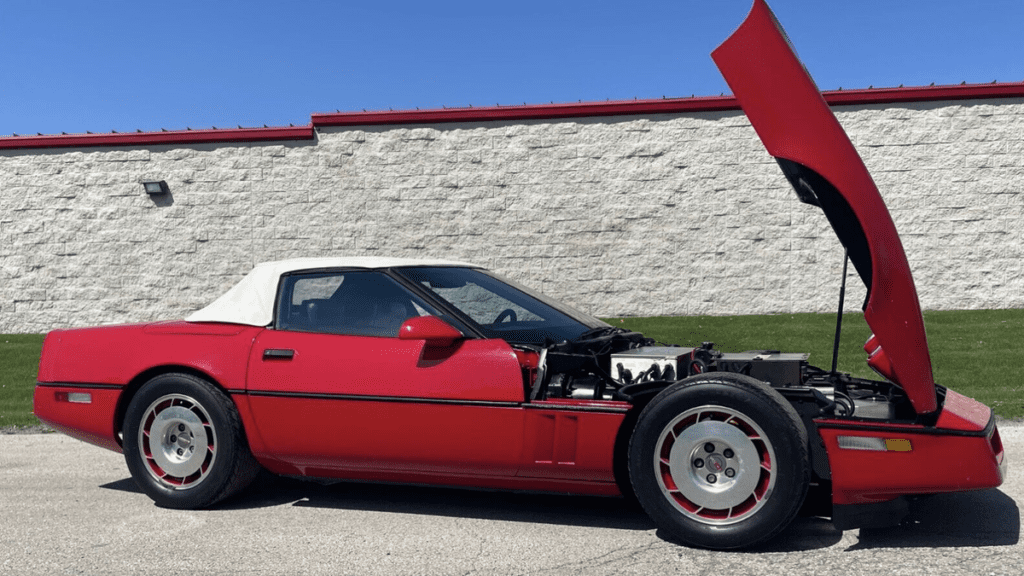That Experimental Motorola Corvette EV Is Up for Auction at $100,000

You may remember this 1987 Motorola-Corvette EV mash-up brought to you by The Drive. Well, now that vehicle is for sale, but the price may make you think twice about snagging a piece of forgotten automotive history for yourself.
Racing Tech | The Most Powerful Engines in Racing Can Be Found in the NHRA
This car might have made Motorola a leader in EVs with a decades head start, if only it was in the economic cards to keep the experiment going. The listing notes the car is non-running and will need new battery packs, but one of the engineers who worked on the Corvette while employed by Motorola told Kevin Williams at the Drive it wouldn’t be impossible to get it up and running again. There are some “ifs” however:
Unlike the GM EV1, where the uncrushed vehicles that made it to museums were disabled, never to run again, the electric Corvette emerged from Motorola intact. Bob Gerbetz said that with modern battery technology, the Corvette would likely run again. And not just run, but really fly.
“Unless the controller or motor are damaged, which is unlikely, the Corvette will provide more than 400 horsepower if a new set of modern batteries is installed,” he said. “The motor can actually be modified and converted to an AC synchronous motor with a bit of redesign and fabrication of some new hardware. The AC synchronous version would be capable of a lot more than 400 hp. That was one option for the next phase of the program, the next phase never happened.”
“The Corvette motor and controller were tested at Ohba’s Soleq test facility in a back-to-back configuration, with the motor driving another motor working as a generator and the power was recirculated to and from an industrial battery bank with enormous capacity. The battery bank was huge. We only needed to provide the motor and generator losses from the battery bank because we were recirculating power. The motor absorbed power from and the generator delivered power back to the power buss,” he said. “So we could run at high power for hours in the lab, much longer than we could run even with today’s best available car battery bank. This is how we know the Corvette will work with a good set of the best currently available batteries.”
The result? Gerbetz said that if the onboard motor was converted to the AC synchronous setup, it could produce 350 horsepower continuously, peaking at a whopping 800 horsepower. It would be decades before a production electric car approached that figure again.
OK, that’s pretty badass, and I’m here for it. But there are some deets that should make any buyer take pause. First, the current owner of the ’Vette, a collector named Larry Brosten, was not exactly forthcoming with Williams about how the car or its boxes and boxes of development notes and paperwork ended up in his possession after a Motorola museum curator bought the car for a song.
Secondly, the eBay listing notes The Drive’s reporting, but then adds this strange detail:
I HAVE SPOKEN WITH ENGINEERS ON THE MOTOROLA TEAM, WHO HAVE EXPLAINED THAT THIS VEHICLE SHARES SIMILAR ARCHITECTURE WITH THE FAMOUS GM EV-1.
Williams spoke to multiple engineers who worked on the project and, while some of them would go on to work on GM’s EV1, the two vehicles have nothing in common really. Add that the ’Vette doesn’t run, and I’d say $100,000 is a remarkably steep ask.
Motorola killed the ‘Vette EV project just a few months before the Toyota Prius (yet another company that squandered its head start in the electrification race) would go on sale in 1997, changing cars forever and proving electrification has a place in the market. The entire story of the Motorola Corvette can be found here and is definitely worth your time.



